09:29 The reddish brown bracts of this plant, resembling overlapping roof shingles, appear almost all year-round, and the white flowers that emerge at the end of the bracts are insignificant and short-lived. The leaves are l-3in/2.5-8cm long, light green, oval, and pointed. 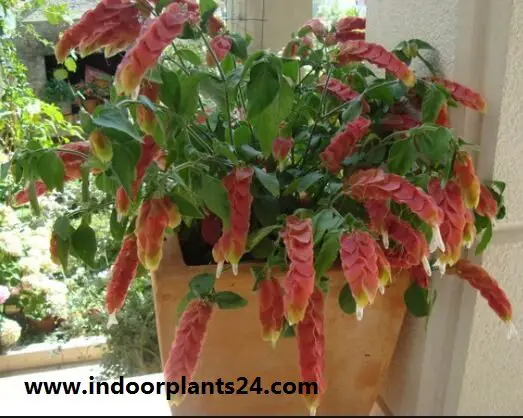
Disregard those who tell you to throw beloperone away after flowering: the plant is easy to care for and can survive for many years, reaching 3ft/90cm in height and spread. It is best to pinch out the stem tips regularly to make the plant bushier, and annual pruning will renew its vigor.
If you do not prune, the plant will almost certainly be larger and will produce colorful bracts, but the relatively weak branches will probably require staking. 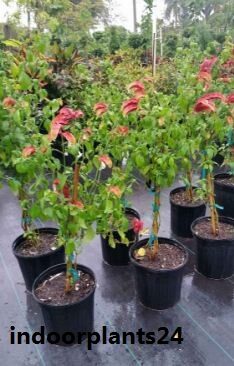 Whiteflies, mealybugs, scale insects, and aphids may attack the plant in hot weather; spray with a suitable insecticide.
Whiteflies, mealybugs, scale insects, and aphids may attack the plant in hot weather; spray with a suitable insecticide.
If bracts do not develop frilly, prune the plant in midwinter, just as the show of bracts ends.  Loss of leaves may indicate that the plant is rootbound; annual potting should alleviate this.
Loss of leaves may indicate that the plant is rootbound; annual potting should alleviate this.
Feed once a month during the winter, and from early spring give the plant plenty of direct sunlight.
Overwatering can encourage the leaves to turn yellow. Do not water again until the soil has dried out completely. 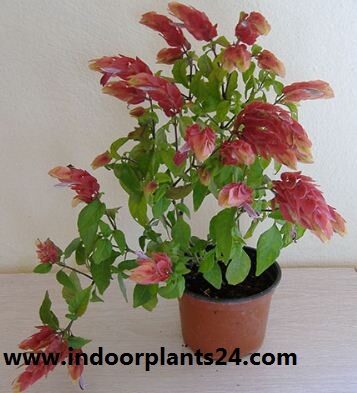 FACT FILE
FACT FILE
ORIGIN Mexico.
HEIGHT To 3ft/90cm.
POTTING MIX Soil-based.
REPOTTING Repot every spring and cut stems back by about half.
PROPAGATION Take 3-in/8-cm tip cuttings in spring; use the prunings but remove the bracts, which will rot if they are left. 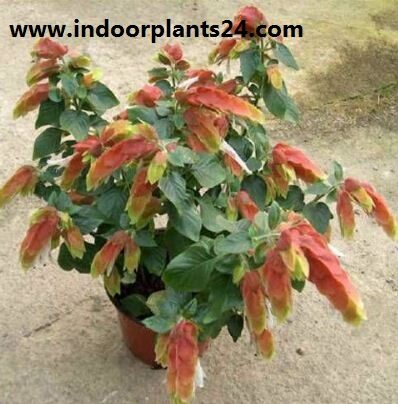 KEEPING PLANTS The arching stems and drooping flower heads make this a good plant for a hanging basket.
KEEPING PLANTS The arching stems and drooping flower heads make this a good plant for a hanging basket.
BELOPERONE GUTTATA (JUSTICLA brandegeana) Acanthaceae FHRIMP PLANT CARE
- A bright place, with direct sunlight for short periods during spring and summer will help to produce colorful bracts.
- Minimum winter temperature of 60°F/16°C; ideally 75°F/24°C at other times.
- Keep fairly dry during winter and moist, not wet, at other times.
- Feed every 2 weeks in summer with a weak solution of fertilizer.
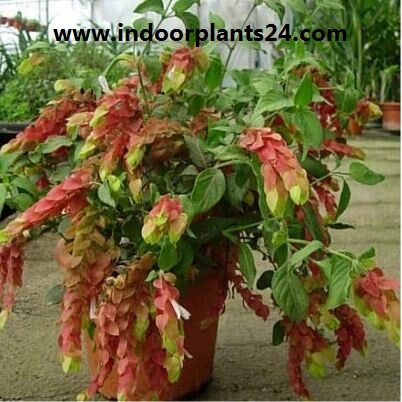
- Share
- Share
- Share
- Share
